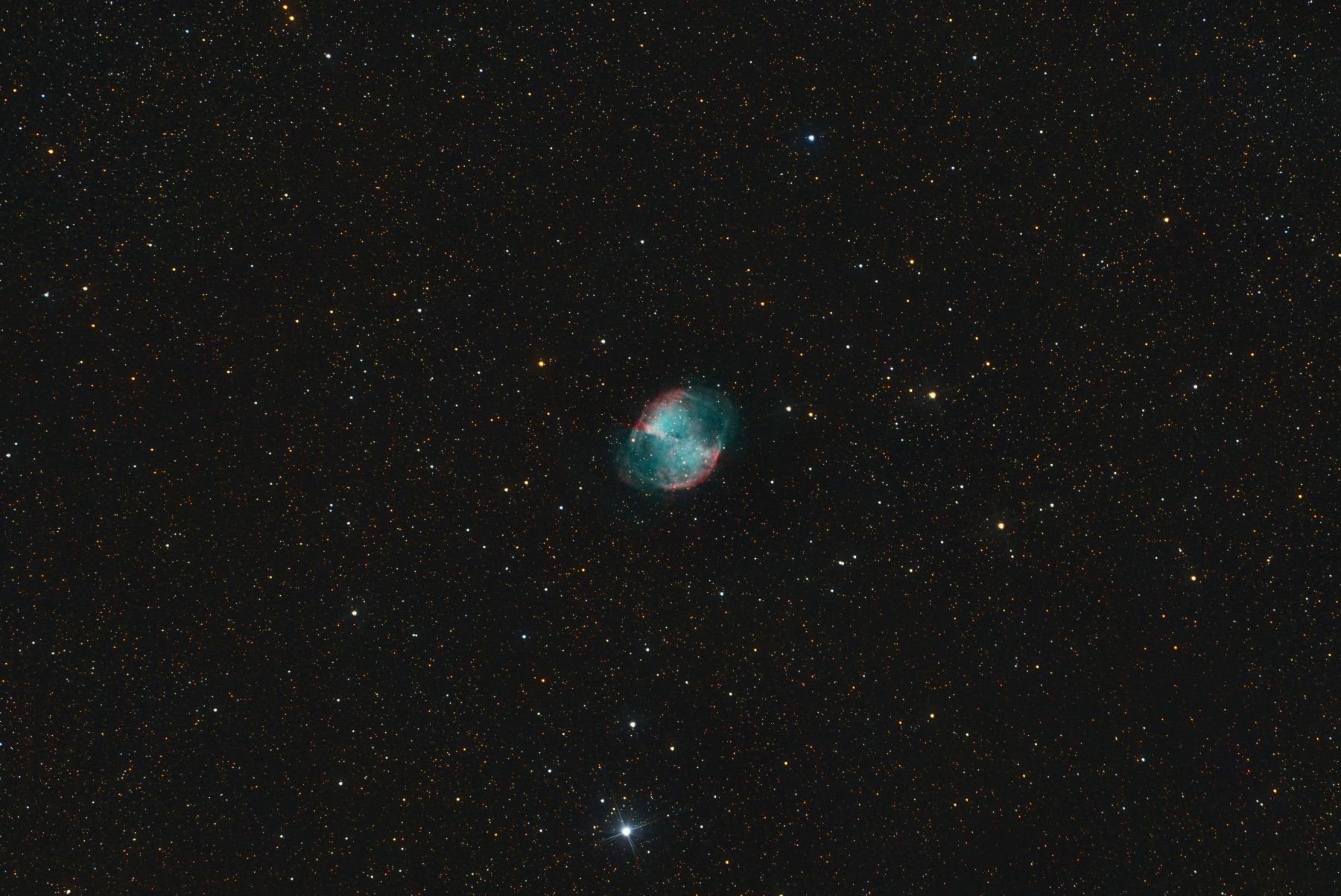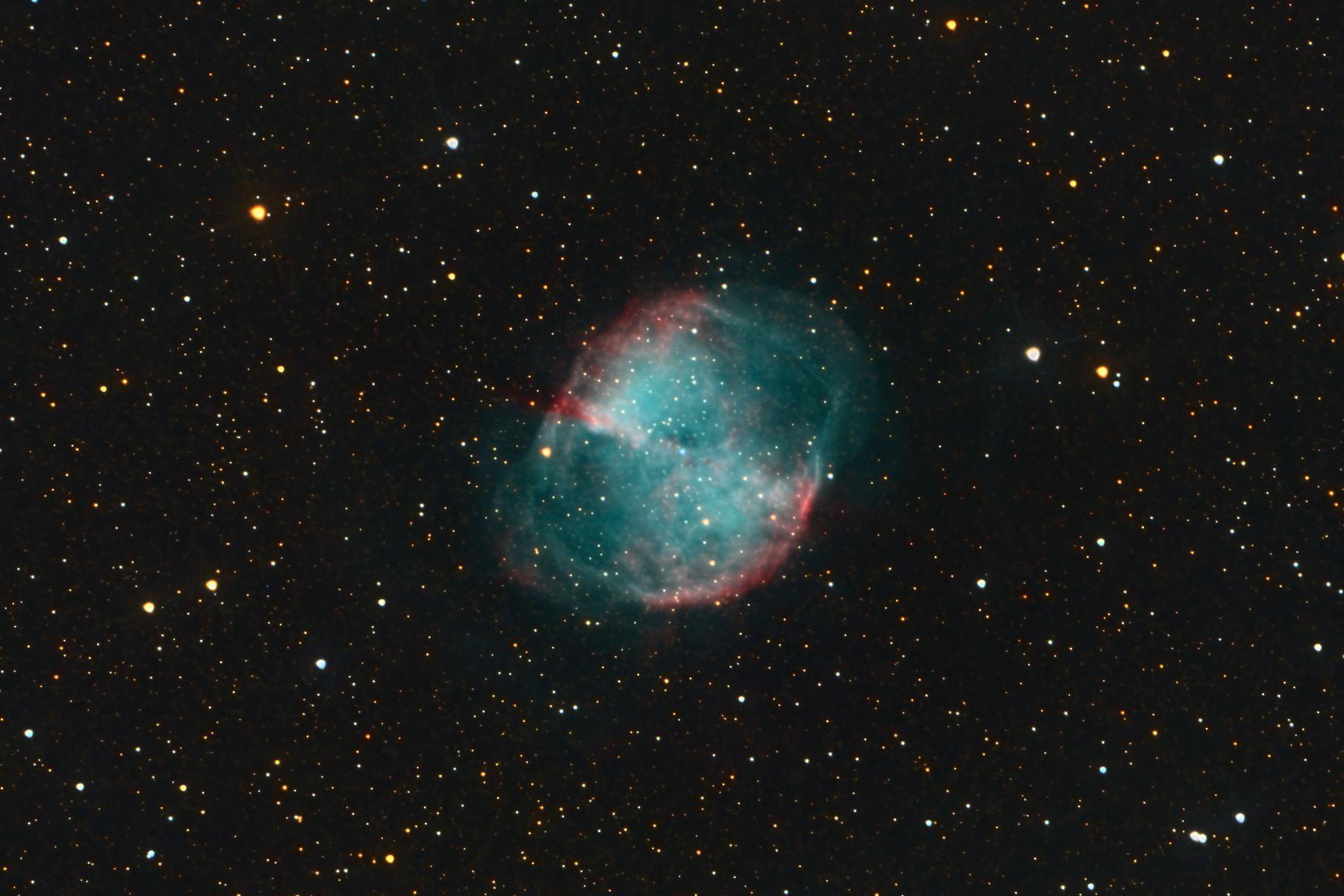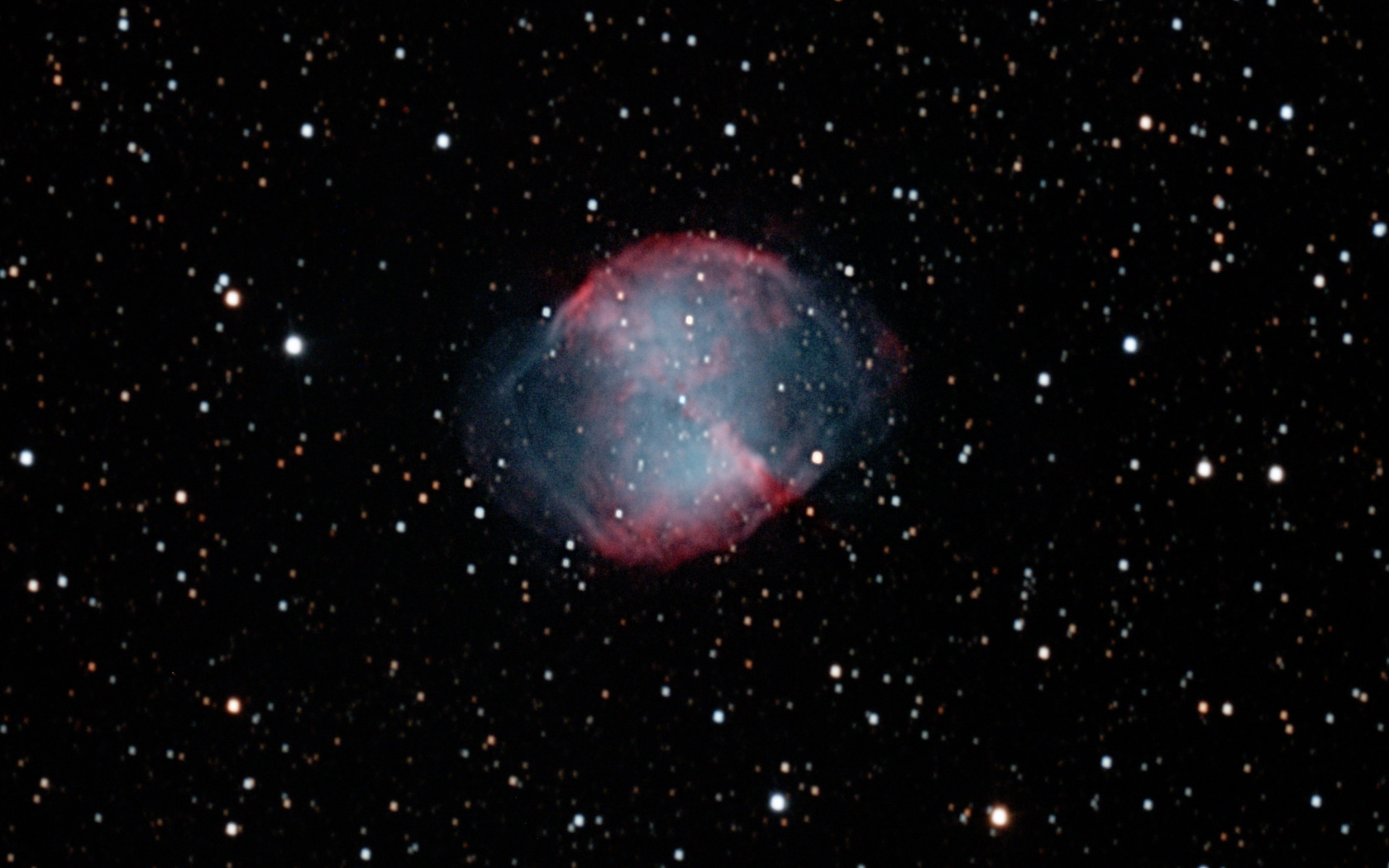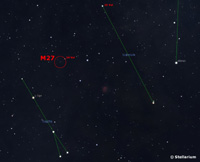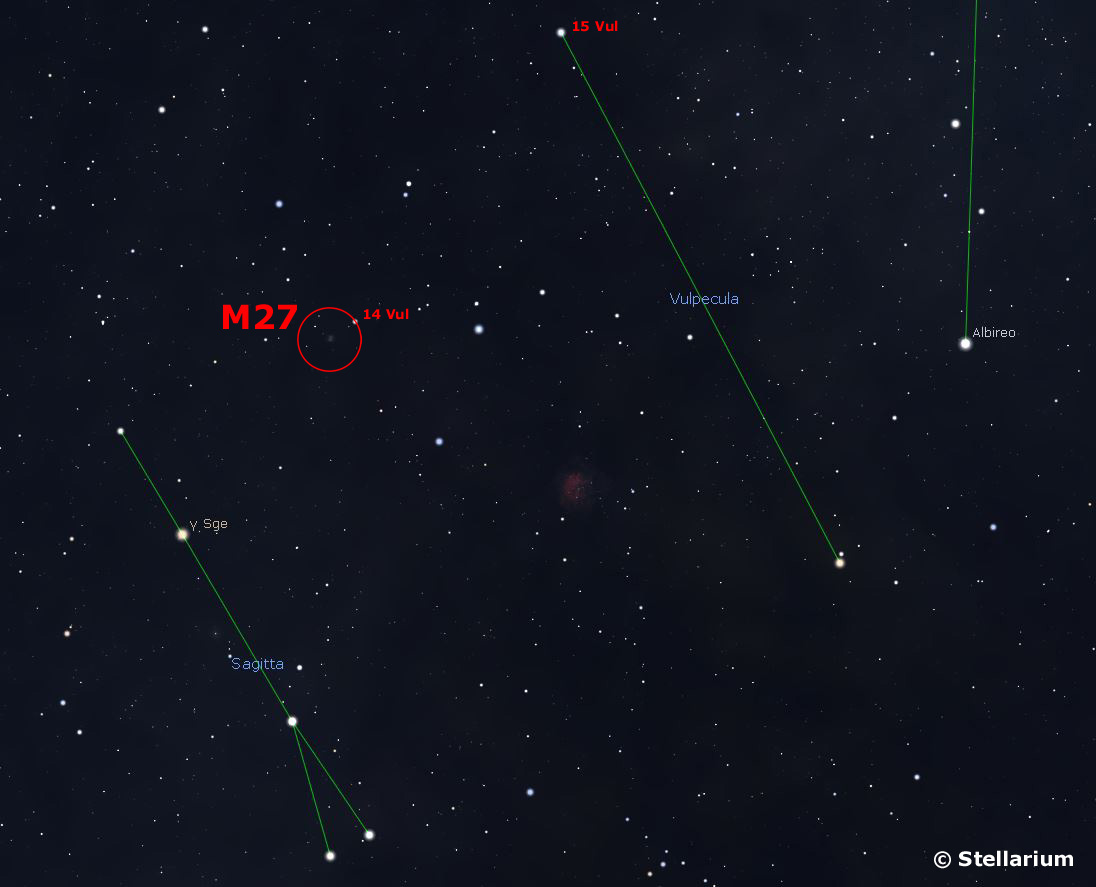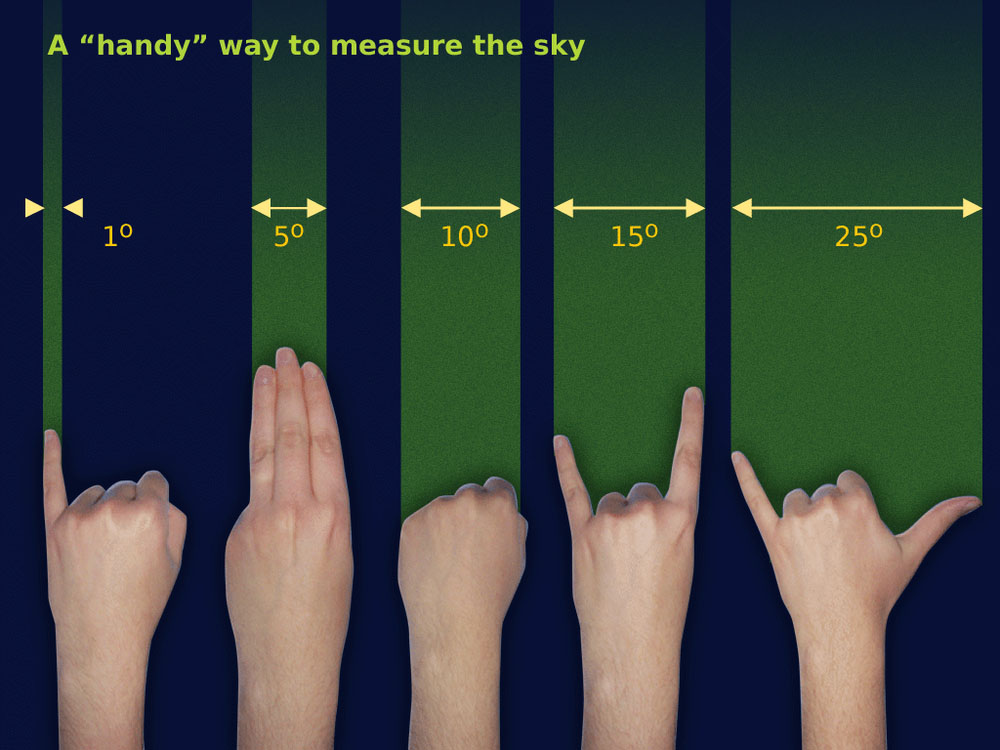Information...
M27 - the Dumbbell Nebula, is a planetary nebula located approx. 1,200 light-years away in the constellation of Vulpecula. It's thought to have formed roughly 9,800 years ago, and is expanding at about 31 km/s.
An image from the Hubble telescope shows that there are many knots of gas & dust within the nebula. The size of these knots typically range from 17 billion to 56 billion kilometres (several times larger than the distance from the Sun to Pluto), and each contain as much mass as three Earths.
The dense knots of gas and dust are thought to form by stellar winds which are not strong enough to blow away the larger clumps of matter, but are sufficient to blow away smaller particles, creating a tail behind the clump. Similar knots have been found in other planetary nebula, such as M57.
The white dwarf at the centre of M27 is larger than most, with an estimated mass of 0.55 times that of the Sun.
For more info. see the Wikipedia entry.
